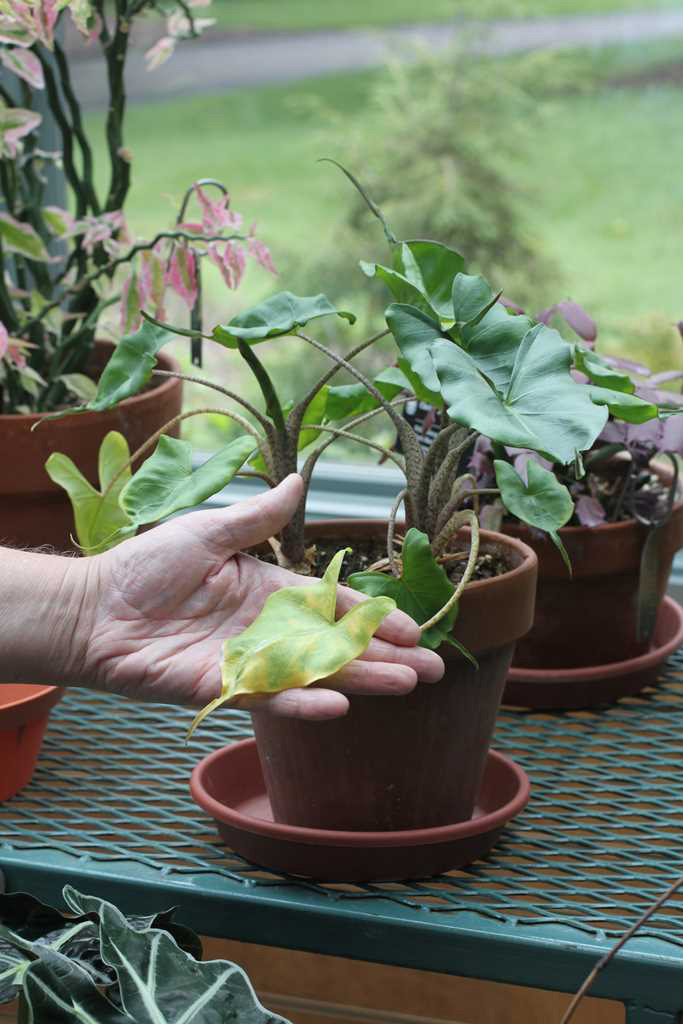
Yellowing leaves can indicate too much water or too little |
Proper watering is important
Proper watering is one of the most important gardening tasks. Underwatering a plant will obviously cause many plants to wilt and die, but overwatering can lead to low oxygen in the soil that results in root rot. In both cases the symptom you see may be yellowing and /or wilted leaves. |
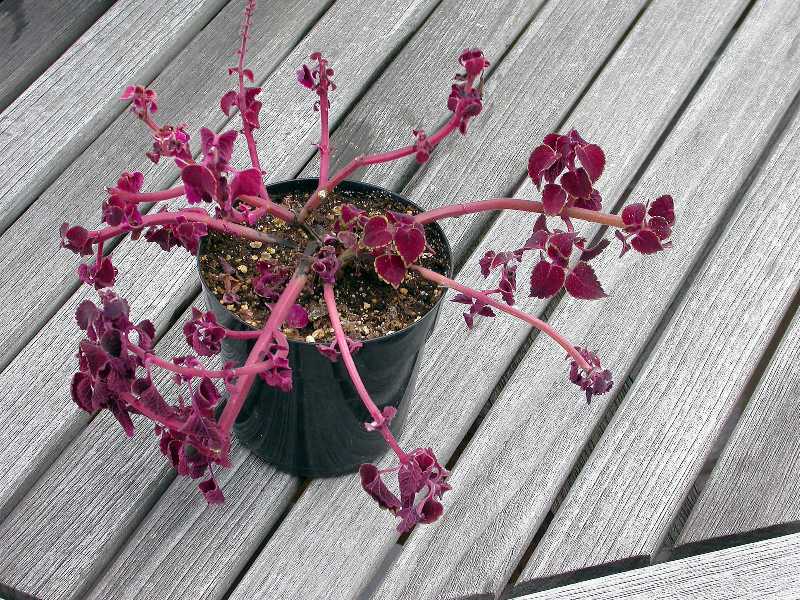
Overwatering can lead to rots; note, the blackened stems in the center of the pot |
Improper watering stresses plants
It is also not uncommon for a plant to get too dry -- you water it and it seems to pop back, but then it goes downhill. The stress may have been too much, some roots died and now rot or a disease has set in. Many plants are killed by too much love (and water) but periodic neglect can also kill. |
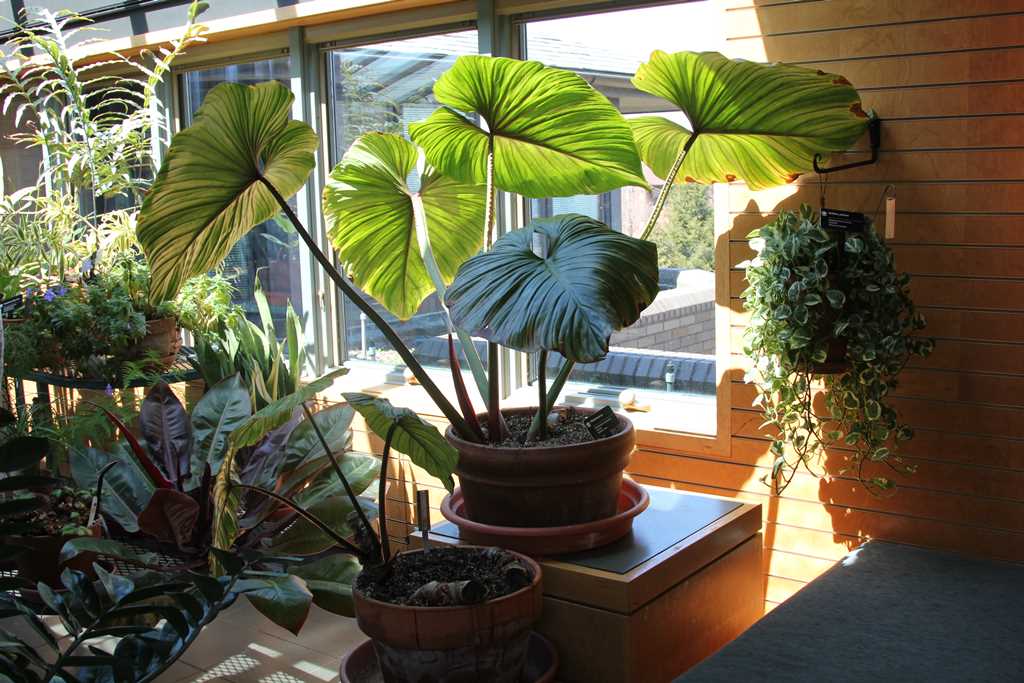 |
Get to know your plants
It is crucial to know the needs of the plant you are watering. Generally, indoor plants fall into one of five categories: |

Umbrella plant (Cyperus involucratus 'Baby Tut') |
1. Grows in standing water: umbrella plant, sedges, rushes, water plants |

Delta maidenhair ferm (Adiantum raddiantum) |
2. Likes evenly moist soil that doesn’t dry out: maidenhair fern, fittonia, prayer plant, poinsettia |

Dumb cane (Dieffenbachia seguine) |
3. Likes the top inch of soil to dry out between waterings and then wants to be watered well: most house plants including, dumb cane, pothos, syngonium
Note: Many plants may also go through a dormant period or resting period (usually in fall or winter) when they want less water. Research your plants and find out what they want. |
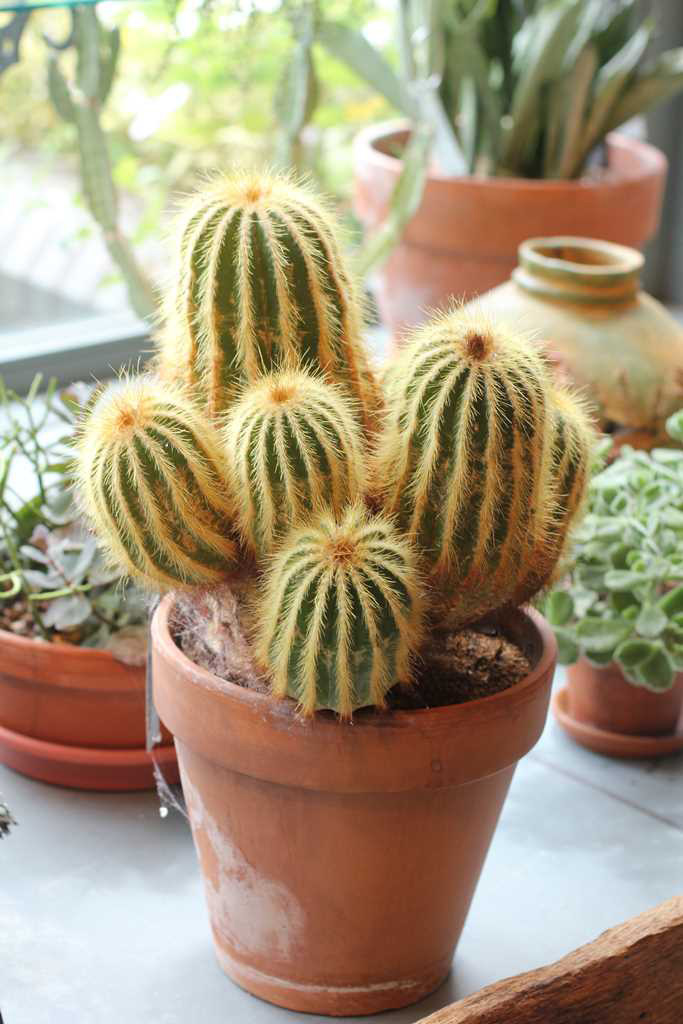 |
4. Likes the soil to dry out between waterings: cacti and succulents, including, jade plant, aloes, kalanchoe, sedums, hoya, air plant
|
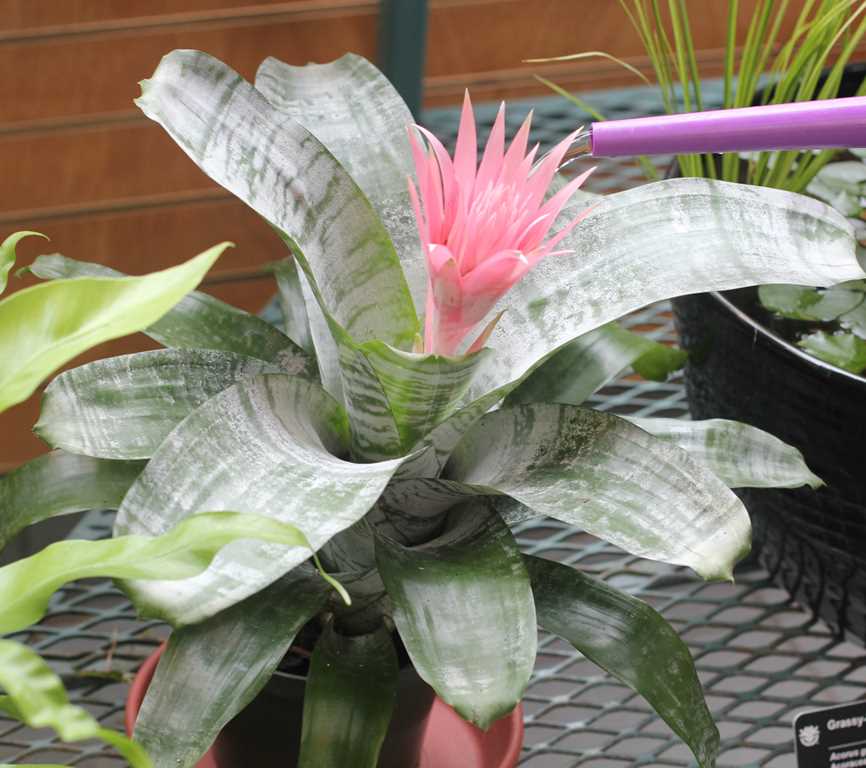 |
5. Likes to be watered into a rosette of leaves (bromeliad).
The one thing many vase-shaped bromeliads have in common is the rosette formation of the leaves. This rosette can collect and hold rainwater, falling leaves and forest debris from which the plant draws nutrients as they decay. Use rainwater or tap water that has been allowed to sit for a day or two to remove chlorine. Watering bromeliads in the center of the rosette “cup” of the plant works well to mimic nature. Freshen the water within this “cup” occasionally by over filling it until water spills over into the flowerpot. |
 |
Pot selection
When selecting a pot either plastic, glazed pottery or clay are acceptable. Generally plastic and glazed pottery will dry out more slowly than clay. Water accordingly. |
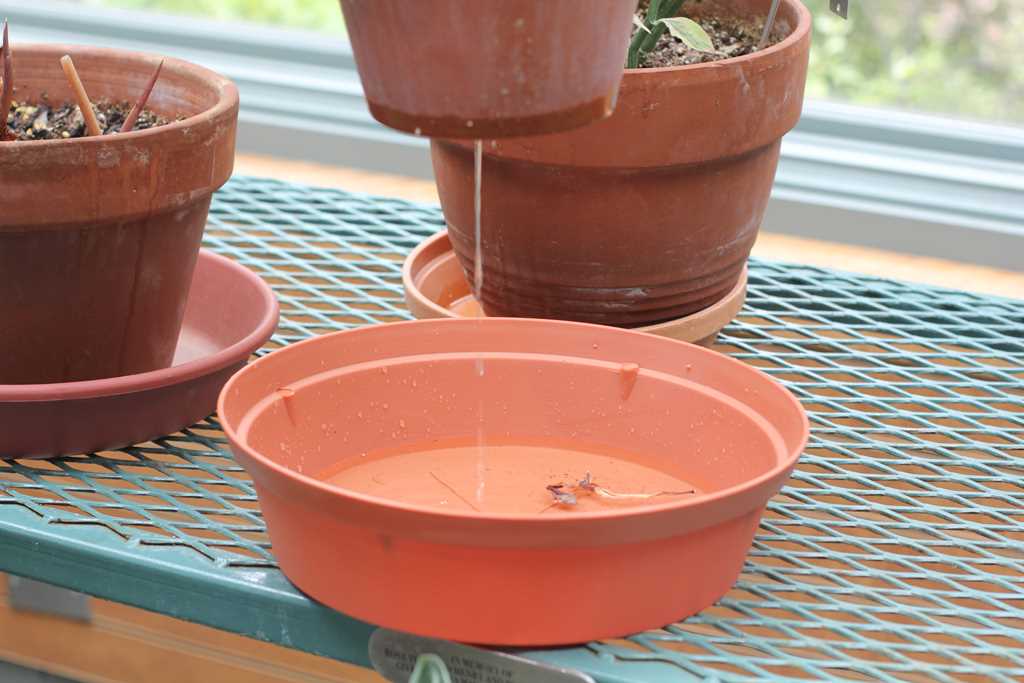 |
You need drainage holes
The most important point is that the pot has a drainage hole so excess water can drain out of the pot into the saucer.
Be careful of gift plants in foil or decorative pot covers as these can retain excess water. Poke holes in the foil or cut off the bottom and place in a saucer so excess water can drain out of the pot. |
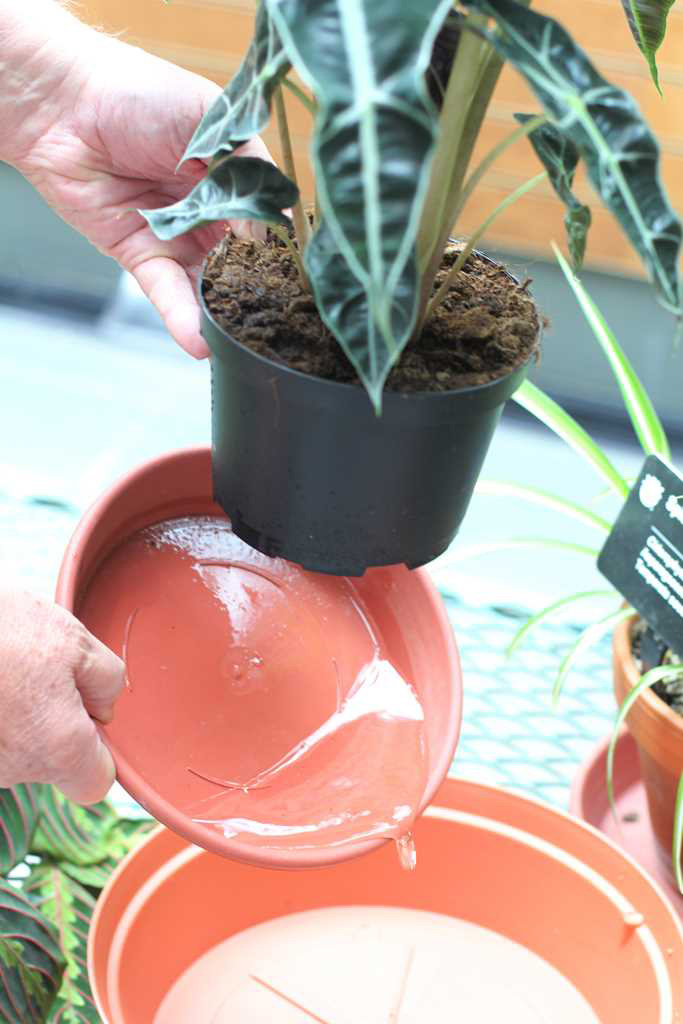 |
Don't let plants sit in excess water
Do not let the pot sit in the excess water in the saucer for long, After the pot has drained, dispose of the excess water. |
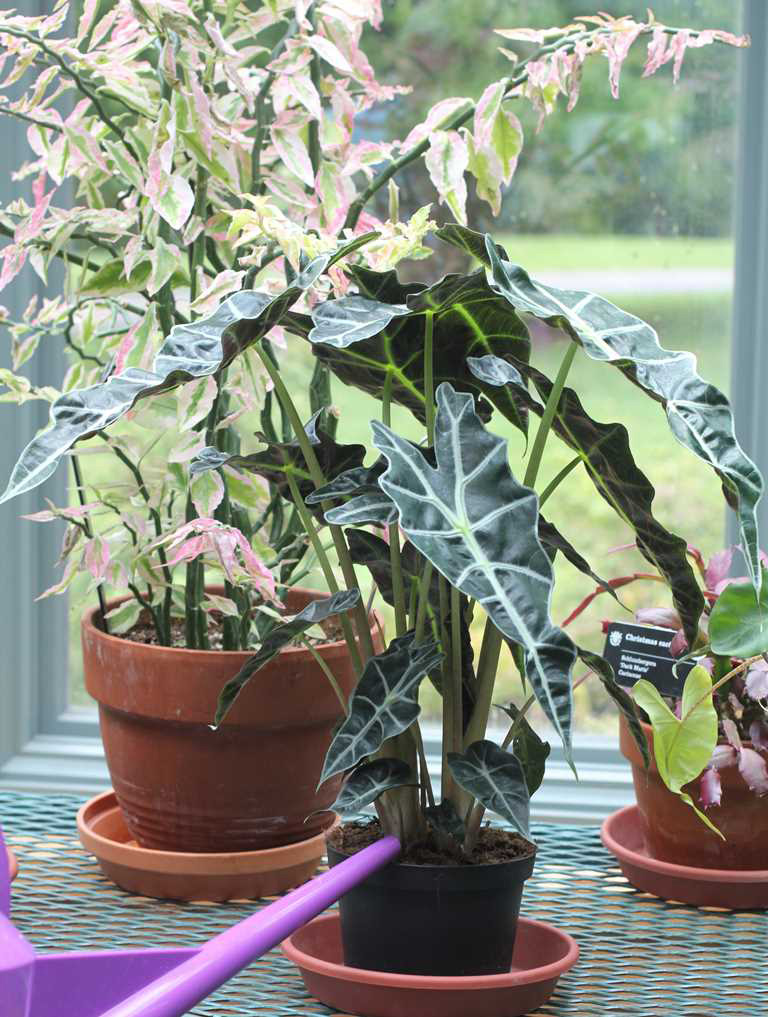 |
Select a watering method
Once you have established the basic watering needs of your plant, there are several methods you can use to gauge how dry or wet your soil is. Below are several methods that can be used in a variety of situations but first, some general watering principles. |
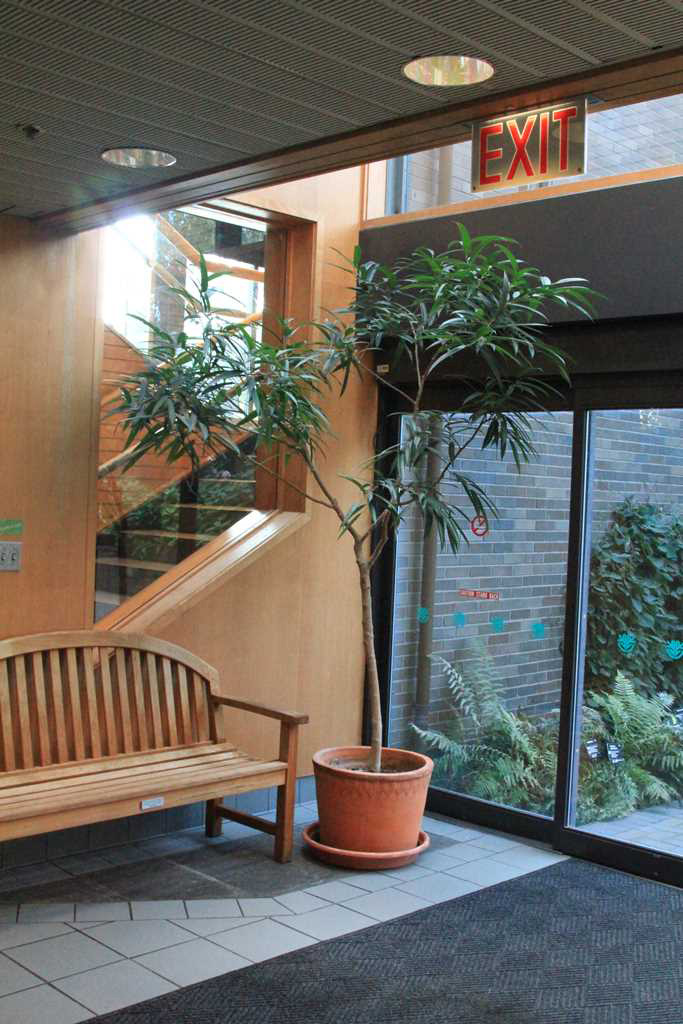 |
Match your watering method to pot size
Some methods may work best for small pots. Others are suitable for pots of any size. Use these methods to “get a feel” for how much water a plant needs in your home in a particular location. |
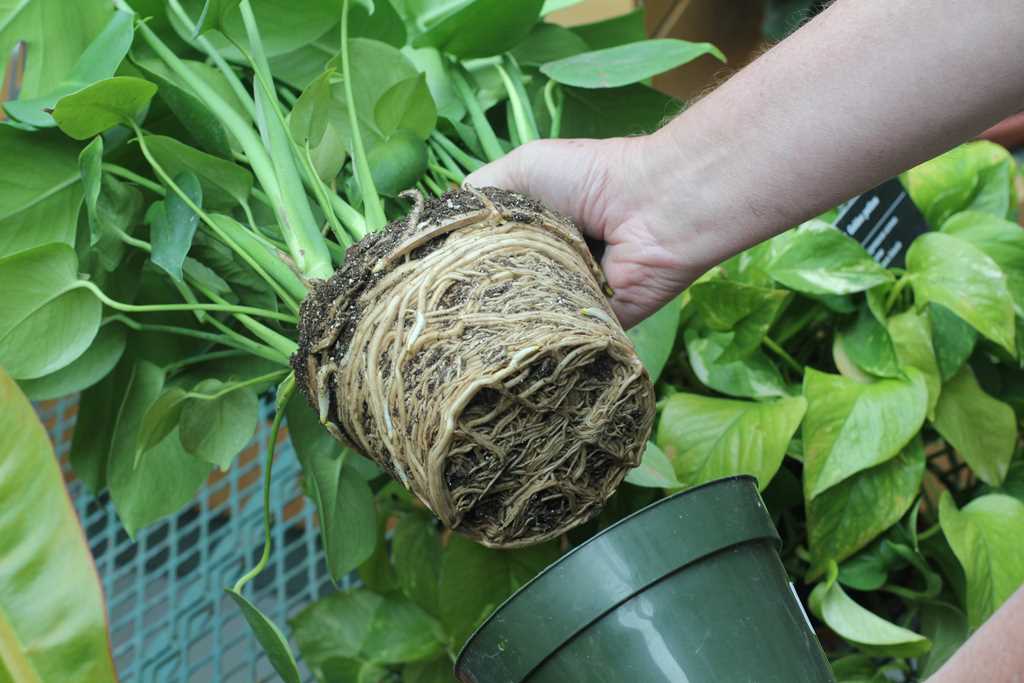 |
Don't be afraid to check the roots
Don’t be afraid to tip a plant out of its pot to examine the soil and roots. This may tell you if the soil is very dry or if the soil is very wet and roots are rotting. |
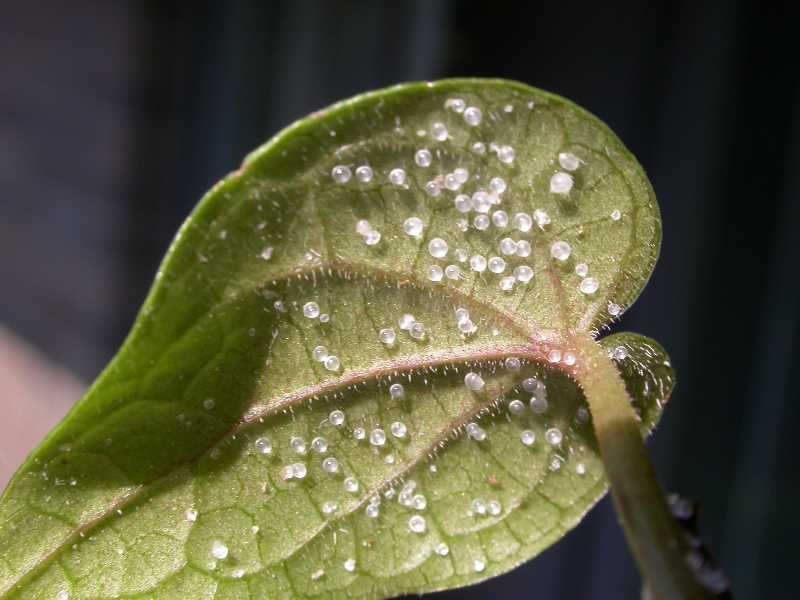
Water droplets on underside of begonia leaf (Begonia) from too much water and not enough air circulation (called oedema) |
Water well and less frequently
Remember, you will generally have fewer root problems if you avoid watering frequently with small amounts of water. Follow nature instead. Think of a rainstorm. |
 |
Water thoroughly when you water
Water the root ball in the pot until some water comes out of the bottom of the pot, dispose of the excess water, and then let the soil dry to the proper level before you water it again. |
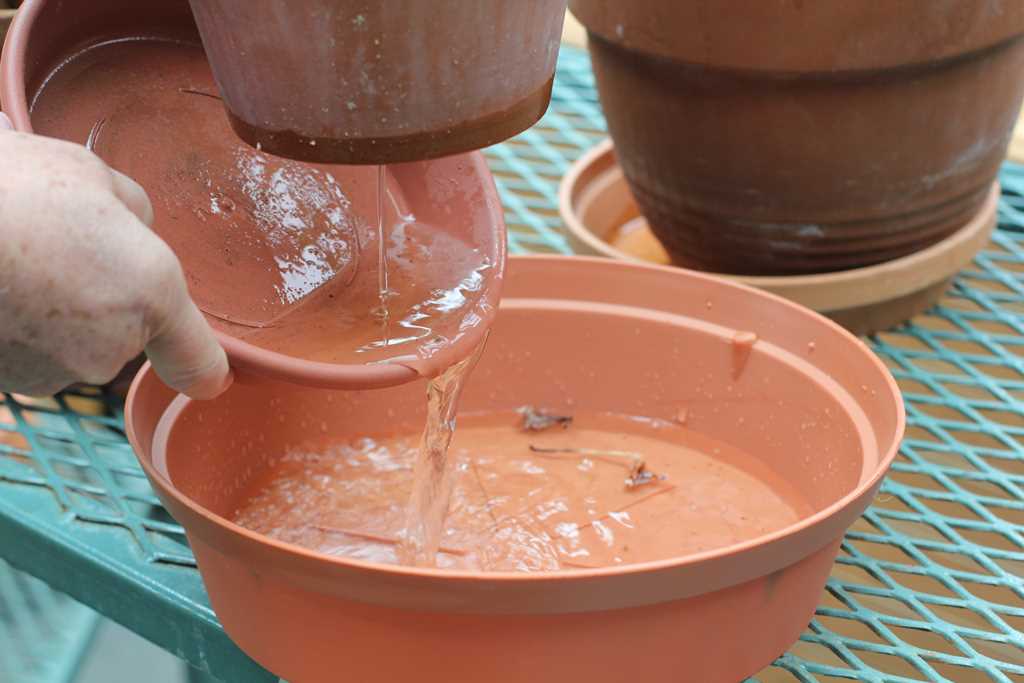 |
Dispose of excess water
Remember, don’t let the pot sit in the excess water in the saucer – dispose of it. Excess water can also be removed using a turkey baster, a sponge or a rag. |
| |
Methods to Judge Water needs
|
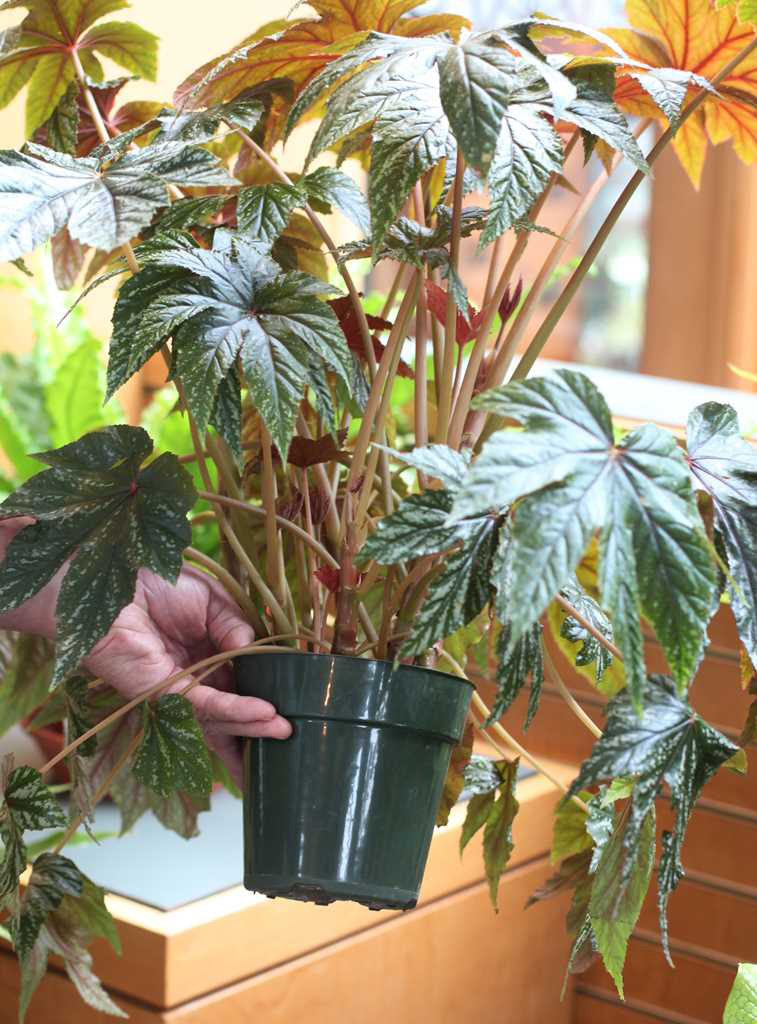 |
1. Lift the pot.
One of the very best ways to quickly gauge the amount of water in the soil is to lift the pot. A plant growing in a soil-less mix in a plastic pot will be very light when it is dry. |
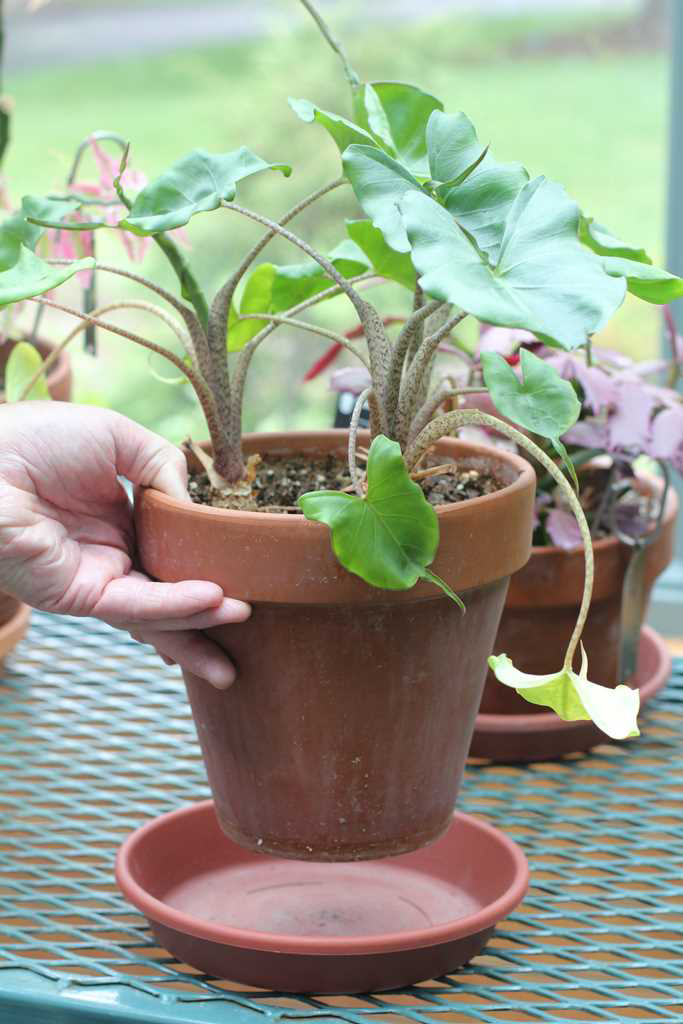 |
Over time you will be able to gauge the weight of small clay pots as well. A very light pot may indicate the right time to water a cactus or succulent but it may mean death for a plant that wants to remain always moist. |
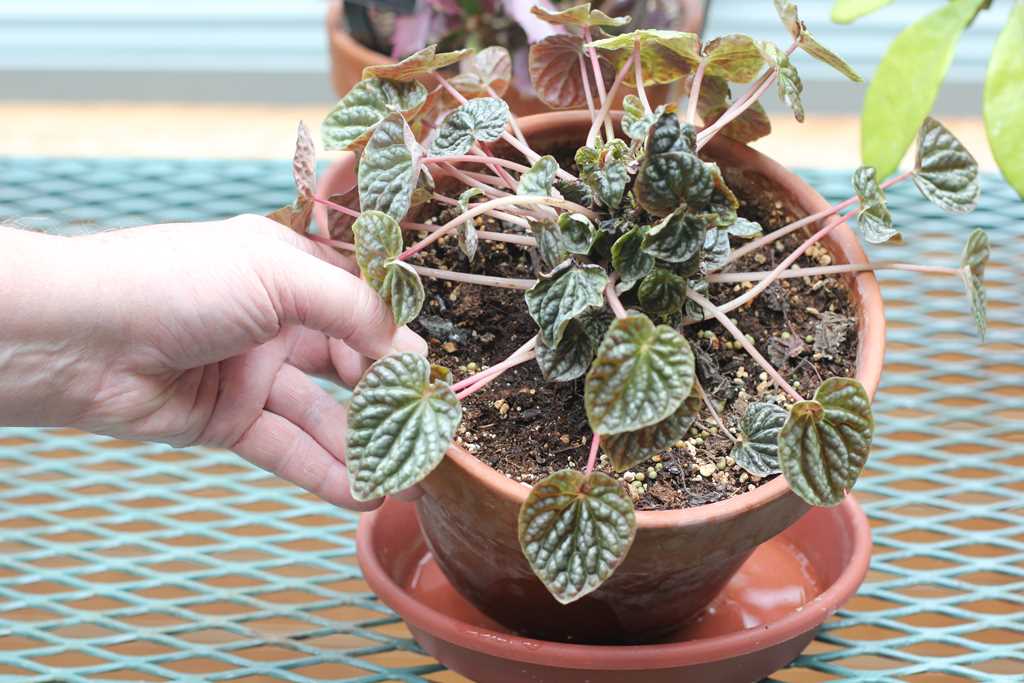
Plant collapsing from too much water |
A pot that feels a little light is about right for most house plants, but if the pot feels heavy, watering now may result in soggy soil, root rot, a wilting plant and even death of the plant. |
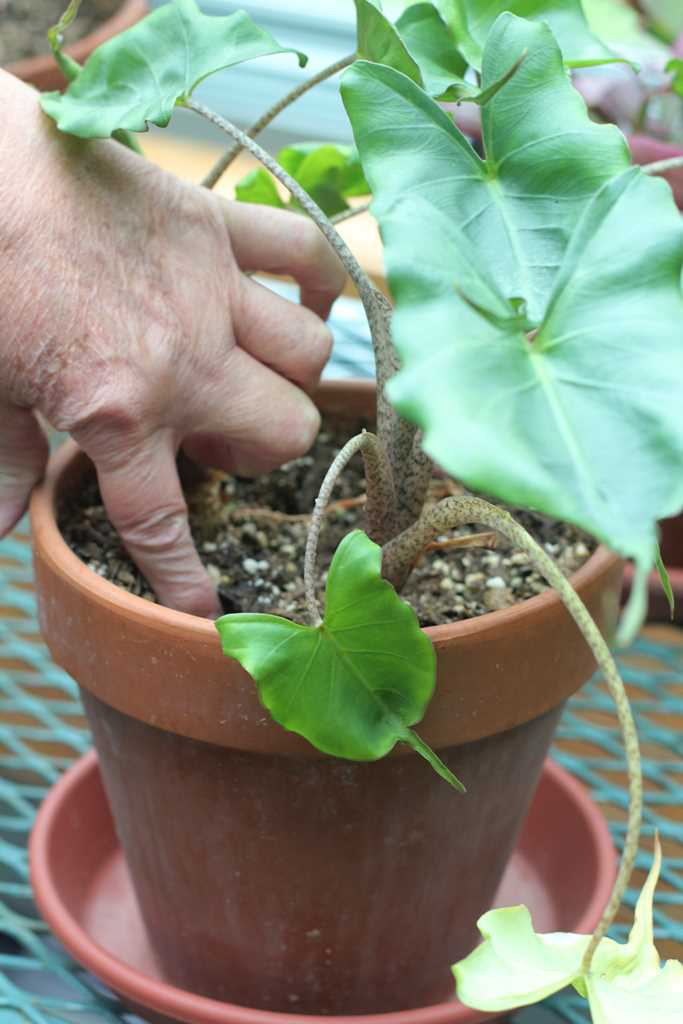 |
2. Feel the top of the soil.
Many gardeners use this method and it is useful for larger pots and experienced gardeners. If the surface of the soil feels wet, for most plants, don’t water yet. |
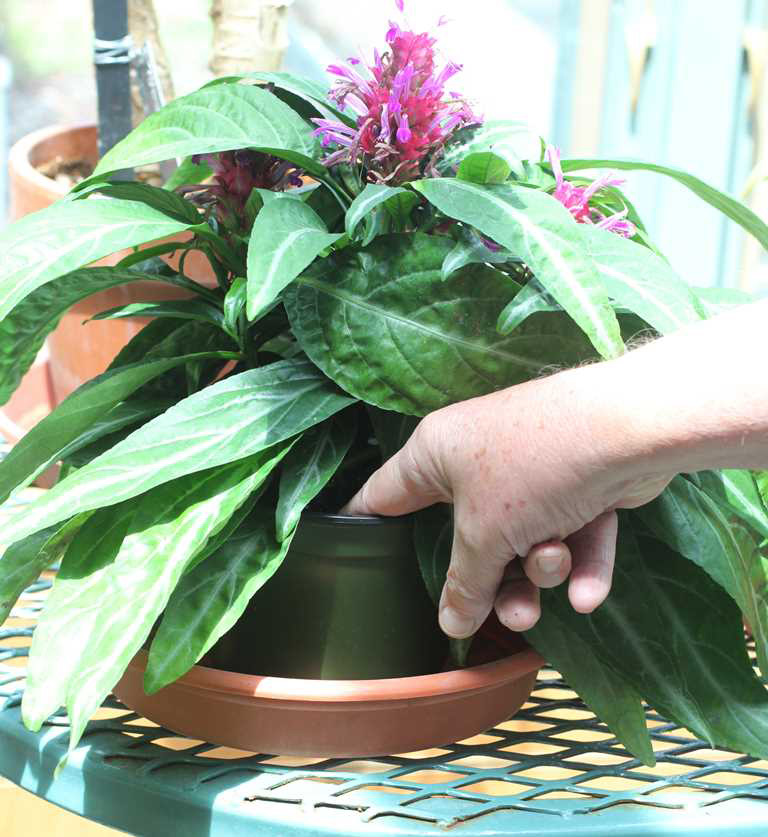 |
If you have to probe down about an inch before you feel moist soil, it is time to water most plants. (Also, lift the pot to see how wet the soil is until you have mastered this technique.) Cacti and succulents may like the soil to be almost dry throughout before you water them again. |
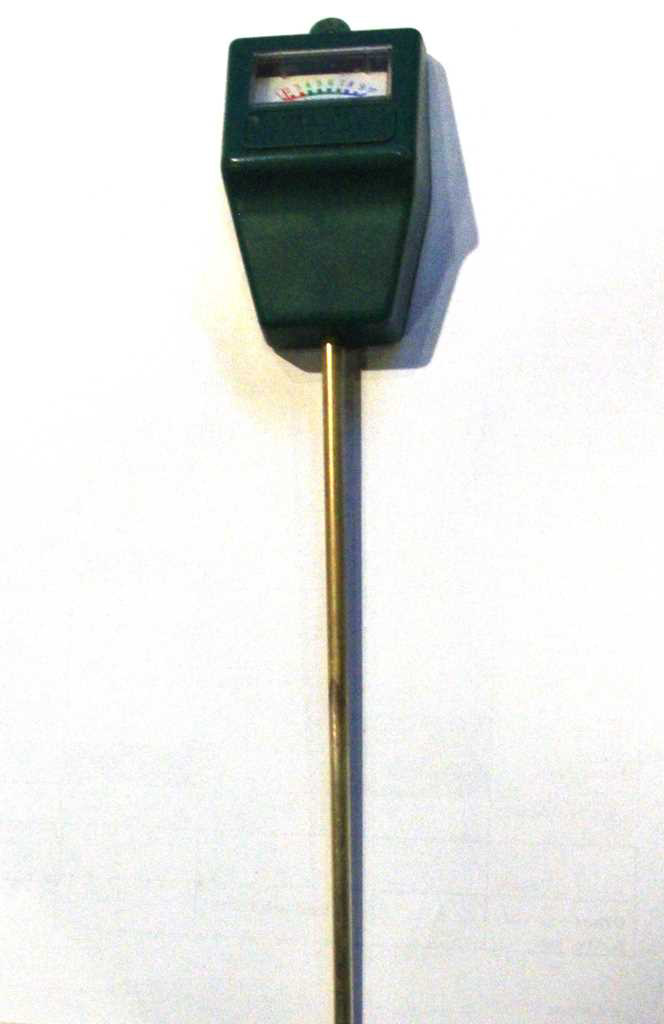 |
3. Use a moisture meter.
Inexpensive soil moisture meters are widely available and can assist you, especially for plants in large pots or planters where they cannot be easily lifted. Learn to use the meter properly however. |
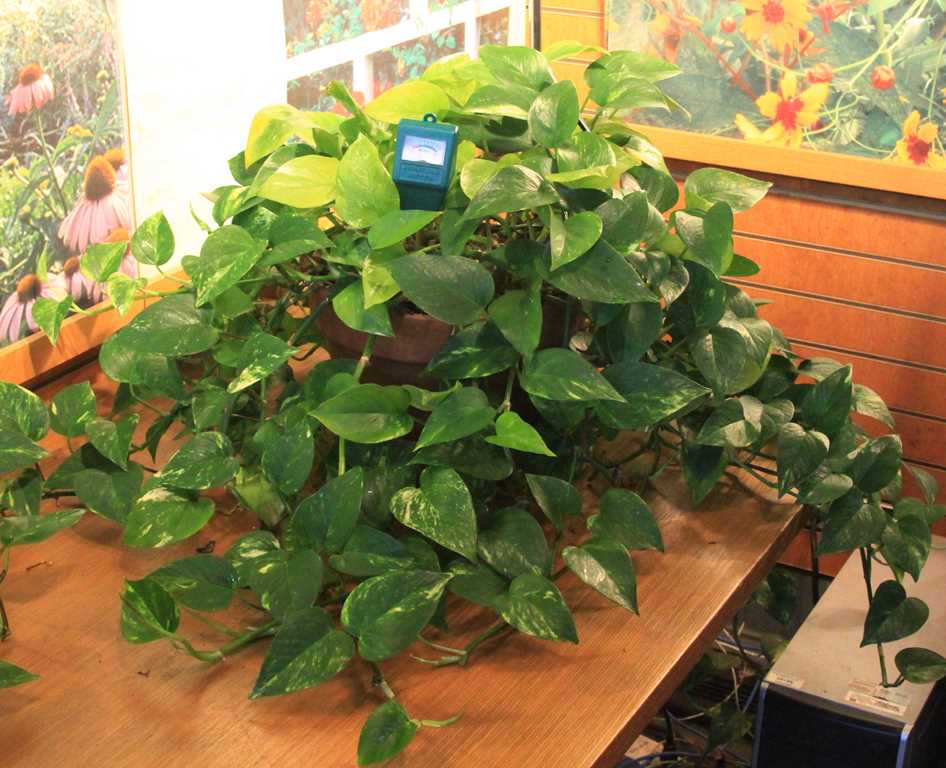 |
Measuring the moisture at the proper level in the soil is important. Remember, the soil in the top of the pot will dry before the soil at the bottom. |
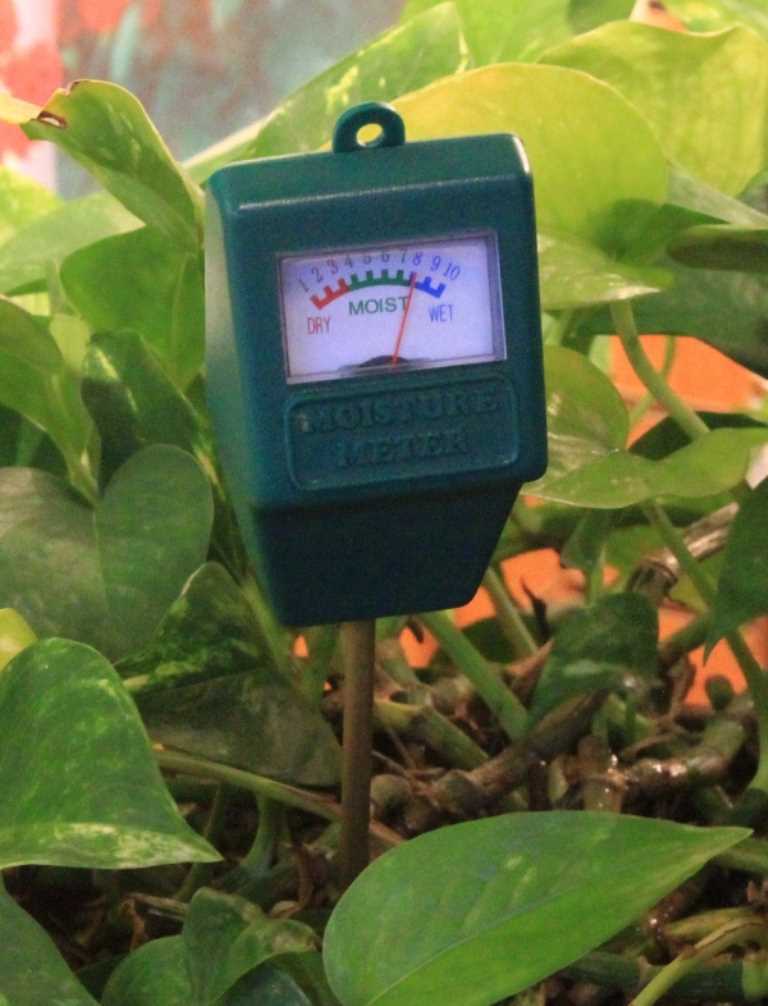 |
Take one reading about 1/4 way down into the pot and another about 1/2 to the bottom of the pot. Usually, a wet reading about 1/4 down in the pot means you should wait before watering more. |
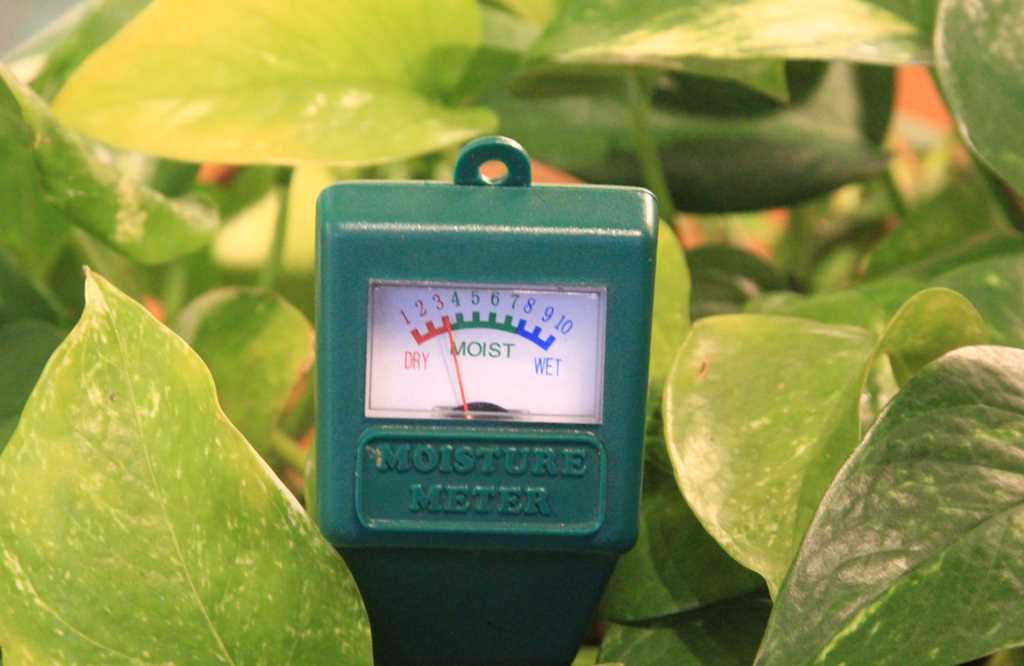 |
A moist or dry reading at the middle of the pot would only be good for some plants that want to dry out considerably between waterings such as cactus, succulents or resting plants. |
| |
Special watering situations |
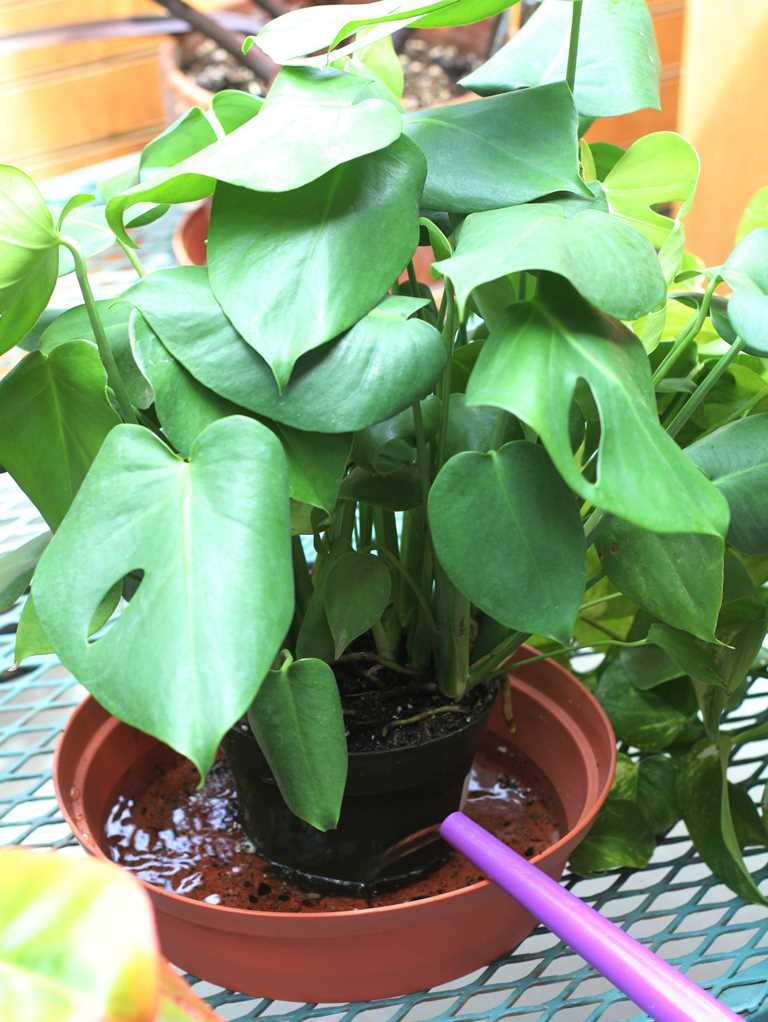 |
Top watering vs. bottom watering
Bottom watering is appropriate for some plants such as African violets, which can be damaged by water on their leaves. To water from the bottom, set the pot in a tray of water and wait for the water to be drawn up and saturate the soil. Then, dispose of any excess.
|
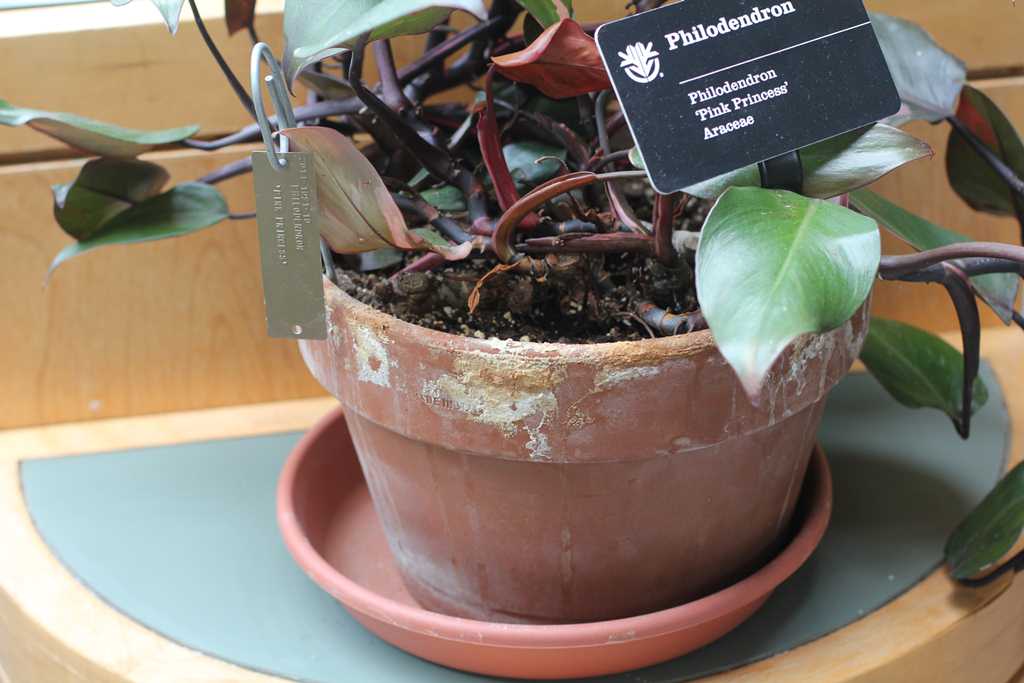
Salt buildup showing on the sides of the pot |
Every 3-4 months it is a good idea to water bottom-watered plants from the top to flush out accumulated salts and minerals from hard water or fertilizers. Use a long-spout watering can to avoid getting the foliage wet. This works best if done in a sink where the excess water and dissolved salts can easily drain away. |
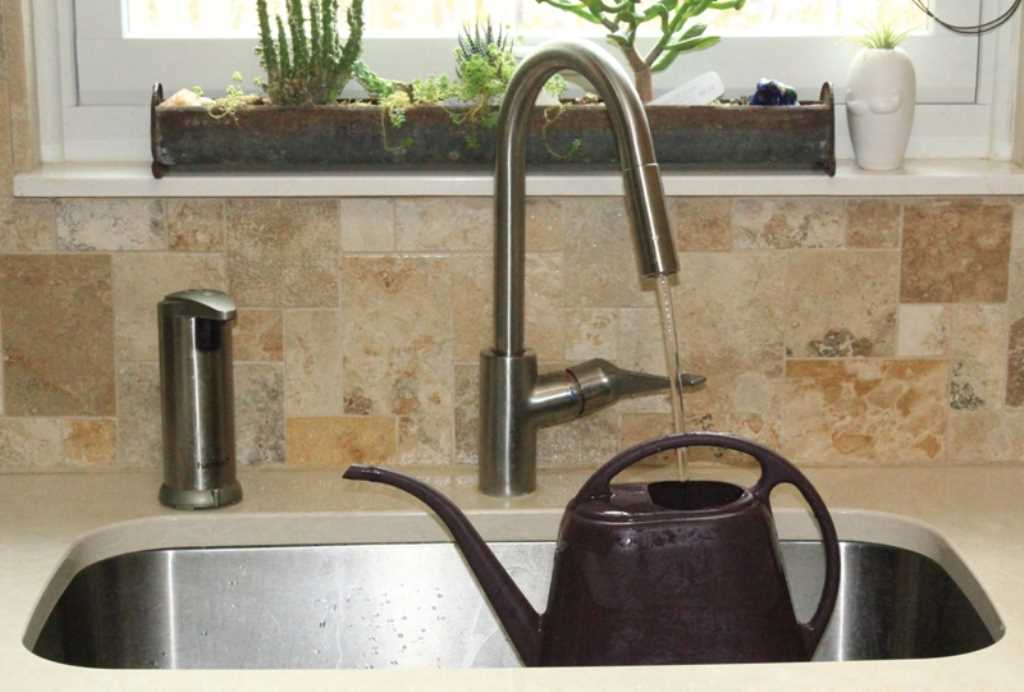
Tap water |
Chlorine and fluoride
Ordinary tap water, well water, rain water, and snow melt are all okay to use if warmed to room temperature. Chlorine added to drinking water does not harm most plants but some may develop brown leaf tips over an extended period of use. If desired, to remove chlorine from tap water let it sit in an open-top bucket for 24 hours to allow the chlorine to evaporate before using it to water plants. This also allows the water to warm to room temperature.
|
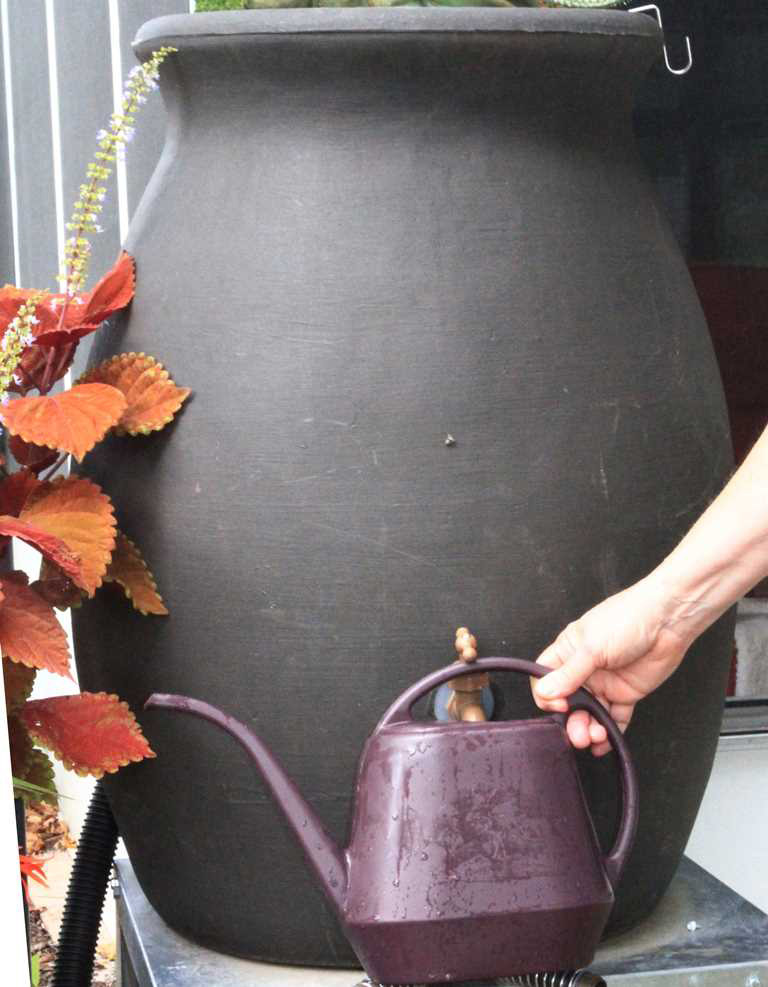
Rain barrel |
Fluoride cannot, however, be removed from water by letting it sit but it is only harmful to a few sensitive plants such as spider plants and dracaenas. It can cause brown spots on leaves or brown leaf tips. These sensitive plants should be watered with rainwater if the brown tips or spots are problematic. Damaged leaves will not recover.
Distilled water or water collected from a dehumidifier can also be used to water plants that may be sensitive to fluoride, chlorine or hard minerals in tap water. Along with rain water these are wise choices for watering carnivorous plants and terrariums. |
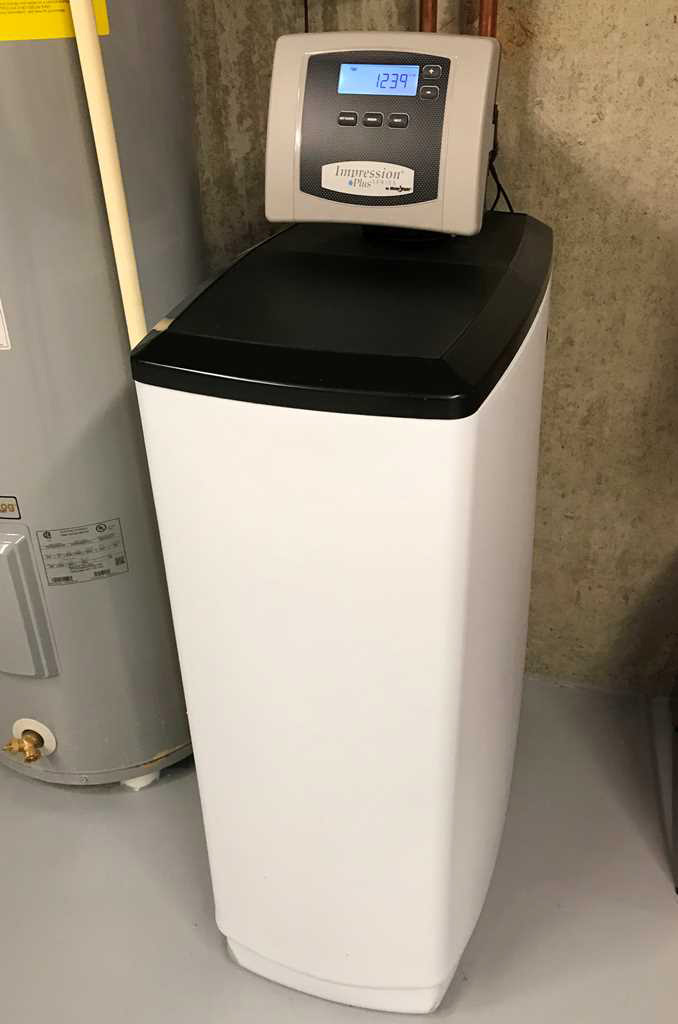
Water softener |
Softened water
Many homes have water softeners that use salt pellets to remove hard minerals from the water. This softened water may be wonderful for baths and showers but the salt added to the water is deadly to plants over time. It should not be used. Locate a spigot in your house that provides water that has not gone through the softener to obtain water for your plants or use rainwater.
|
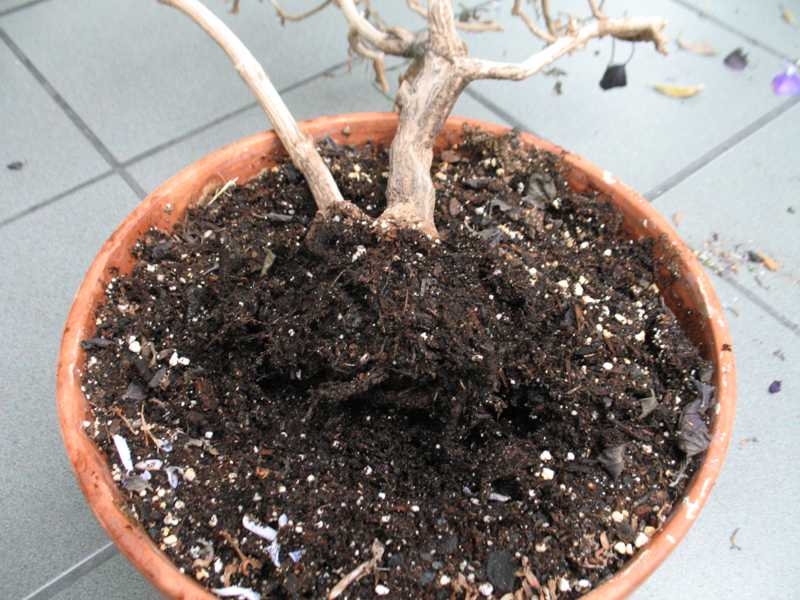
This Plectrantus 'Mona Lavender' died from root rot |
Repotting problems
It is common to move plants to a larger pot as they grow but avoid repotting a small plant into a large pot. Generally, the new pot should only be about 2” larger than the rootball. For example, move from a 6” diameter pot to an 8” pot. Plants placed in a pot too large for the rootball can develop root rot because the large mass of soil not yet penetrated with new roots does not dry out sufficiently between waterings. Also, remember, some plants, such as figs and rubber plants do best when slightly rootbound.
|